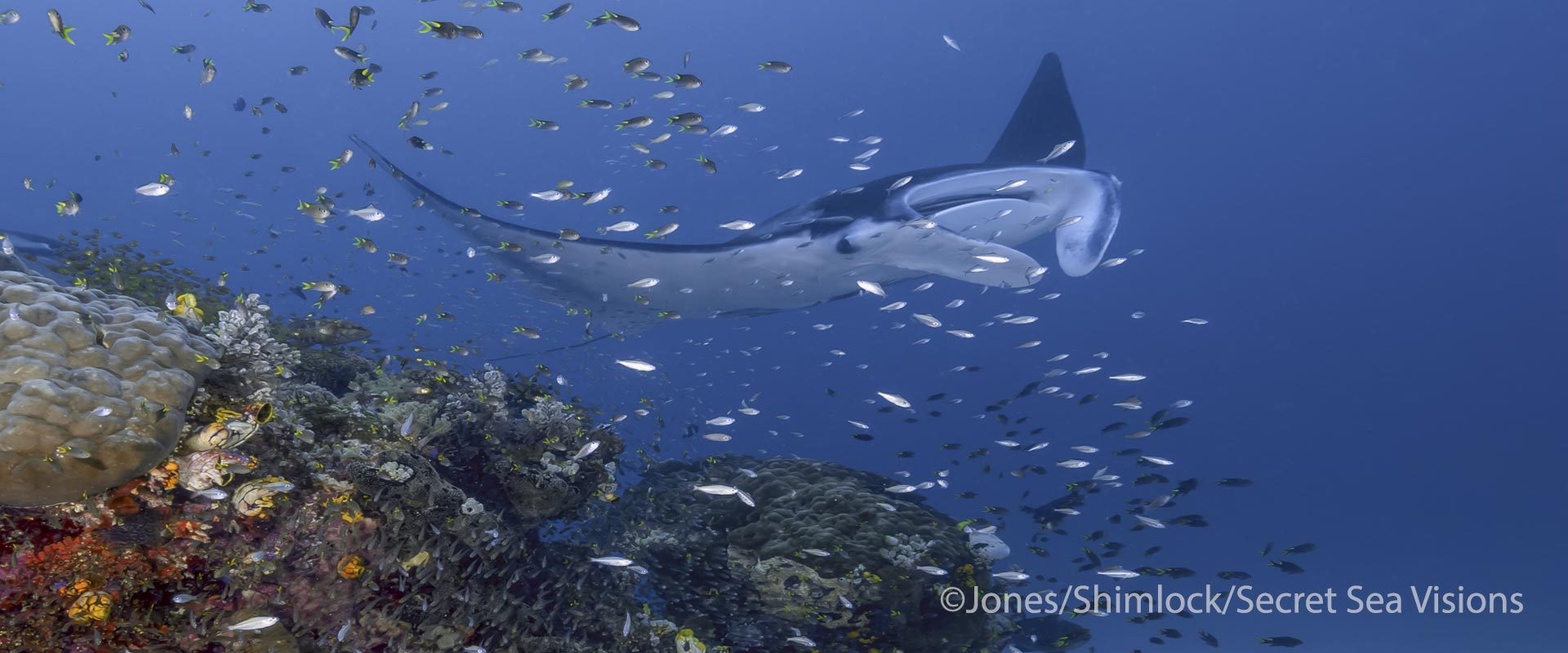Raja Ampat Reef Manta Ray Movements by Edy Setyawan & et al
Raja Ampat Reef Manta Ray Movements
A Research Article: Site Fidelity and Movement Patterns of Reef Manta Rays (Mobula alfredi: mobulidae) Using Passive Acoustic Telemetry in Northern Raja Ampat, Indonesia By Edy Setyawan, Abraham B. Sianipar, Mark V. Erdmann, Andrew M. Fischer, James A. Haddy, Calvin S. Beale, Sarah A. Lewis, Ronald Mambrasar
Though extremely valuable to the local marine tourism industry, there is a dearth of published information on the ecology and population dynamics of reef manta rays (Mobula alfredi) in Raja Ampat, West Papua, Indonesia. Knowledge of the movement ecology in particular of this large and scattered population is urgently needed to better manage the rapidly expanding manta-focused tourism. Here we report the results of an initial passive acoustic telemetry study designed to provide local managers with the first detailed knowledge of the site use and movement patterns of reef mantas in northern Raja Ampat.
Read the entire article HERE.
The following are BHS exclusive comments from Edy summarizing his research:
Reef mantas (Mobula alfredi) are highly migratory species and are known to travel hundreds of kilometres. In northern Raja Ampat region, West Papua, passive acoustic telemetry confirmed the key aggregation sites of reef mantas and revealed their seasonal movement patterns. Acoustic receivers, which were deployed at several active manta aggregation sites, recorded the presence of reef mantas equipped with acoustic tags.
Eagle Rock, Yefnabi Kecil, Manta Ridge, and Wai are the most frequently visited sites by the acoustically tagged reef mantas. These sites actively serve as cleaning stations and feeding grounds for this vulnerable species. The mantas showed strong site fidelity as they continuously return to or stay in the vicinity of these four aggregation sites. An individual reef manta could remain nearby an aggregation site up to 14 hours. On a day-to-day basis, the peak time of manta visitation to aggregation sites occurred mainly towards and around noon.
The filter feeders also seasonally migrated among the four key aggregation sites. During the southeast monsoon (May to October), they mainly occurred around aggregation sites in the west of Waigeo. During the northwest monsoon (November to April), they remained around Dampier Strait. Interestingly, none of the tagged mantas were detected by acoustic array deployed in Misool in southern Raja Ampat. This confirmed limited migration of reef mantas in the northern part of the archipelago.
Edy Setyawan, is a Field Manager at the Sea Sanctuaries Trust





































